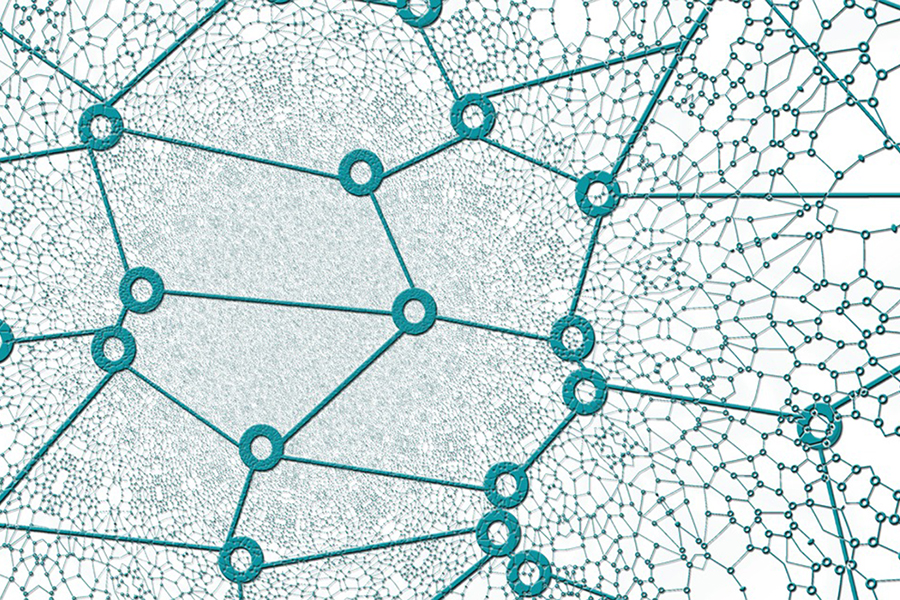
Yagan Receives Three Federal Grants for Network Science Research
By Krista Burns
Media InquiriesOsman Yagan, a research professor in electrical and computer engineering and a core member of CyLab, has recently received three federal grants totaling $1.6 million from the National Science Foundation (NSF), the Army Research Office (ARO), and the Air Force Office of Scientific Research (AFOSR) for proposals focusing on network science. With research interests in modeling, design, and performance evaluation of complex systems, Yagan’s particular emphasis on revealing the interplay between the structure of networks and real-life spreading processes taking place over them are the main subjects of the grants.
“While network science covers many areas, our proposals touch on three topics,” explains Yagan. “Contagion processes, detection and mitigation of spread of misinformation, and social network modeling.”
Scientists use complex mathematical models to predict the spread of something across populations, ranging from a coronavirus to misinformation. Typically, they’ll study the first few steps in which the subject spreads, and use that rate to project how far and wide the spread will go. However, evolutionary impacts—from pathogen mutation to modified information—must be taken into consideration when predicting the spread.
In Yagan’s proposals to the NSF and ARO, his research aims to develop new approaches in modeling, analysis, and control of simple (e.g., spread of information and diseases) and complex contagions (e.g., spread of influence and opinions) over networks.
“We propose a novel complex contagion model to study the simultaneous spread of multiple correlated opinions,” says Yagan. “Utilizing this model, we aim to derive fundamental relations between the network topology; reveal the impact of correlated opinion propagation on the polarization in the population; develop algorithms to efficiently control the spread of an opinion with constraints on other opinions and/or polarization; and understand the impact of hyper-influencers on the dynamics of correlated opinion propagation.”
A specific goal of the ARO project is to focus on data-driven approaches to understand the spread of misinformation over multiple platforms. A timely example is focusing on election fraud and protest-related posts concerning the 2020 elections and the upcoming 2022 elections in the United States.
“I am particularly focused on developing methods for predicting cases where social media activity can spill-over to the physical world potentially leading to material violence,” explains Yagan.
Yagan’s project funded by the AFOSR will advance modeling complex interdependent networks, and analyze and optimize their robustness against random failures and targeted attacks. Focusing on the resilience of critical infrastructures, like power grids and transportation systems, Yagan seeks to design interconnected networks that have robust resources to prevent cascading failures and other functionality issues that could hamper their ability to serve a population.
“The smart grid is an archetypal example of a complex interdependent network,” explains Yagan. “The power grid network and the communication network are coupled together; the grid depends on the communication network for its control, and the communication network depends on the grid for power. While this coupling with a communication network brings unprecedented improvements and functionality to the power grid, it has been observed that such interdependent systems tend to be fragile against failures, natural hazards, and attacks.”
Yagan proposes developing a novel and general interdependent system model that could help understand how failures would propagate in an interdependent system that possibly constitutes physical and cyber components.
“Our efforts will concentrate on two frameworks. An interdependent system consisting of a physical and a cyber network with each network following a fundamentally different intra-dependency rule, and an interdependent system consisting of two physical networks.”
Previously, Yagan’s network science research has been focused on assessing COVID-19 countermeasures and modeling disease spread. Though network science is an interdisciplinary field whose experts range from mathematicians to sociologists, Yagan views his role as rooted in building realistic models and optimization.
“As an engineer, I always seek to go beyond understanding real-life phenomena and find out how we can improve them for the benefit of society,” says Yagan.